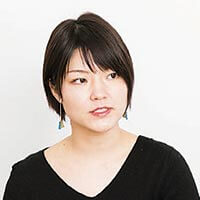
Saeko Higuchi
Japan
Second-year master’s student
Real Project: OIKOS
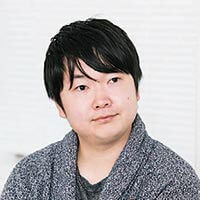
Kengo Hosaka
Japan
Second-year master’s student
Real Project: OIKOS
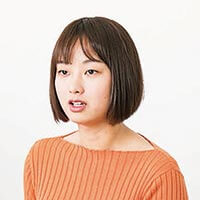
Xinyu Hu
China
Second-year master’s student
Real Project: Global Education
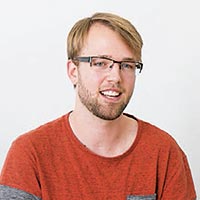
Tanner Person
America
Second-year master’s student
Real project: Embodied Media
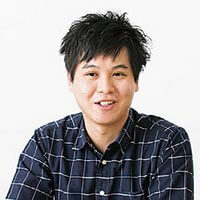
Satoshi Matsuzono
Japan
Second-year master’s student
Real project: Embodied Media
Why did you all decide to enroll at KMD?
Saeko: While at the Faculty of Law, I came across the design thinking of the d.school at Stanford University. As my interest deepened, I realized that I wanted to design useful mechanisms for society and felt that KMD would be the perfect place.
Kengo: Although I studied economics at a university in New Zealand, I was also actively involved in drama and stand-up comedy. I chose KMD as somewhere I could tackle social problems from both the angle of economics and the performing arts.
Xinyu: Since participating in an exchange program at Keio while at an American university, I have wanted to work in Japan. I entered KMD in order to acquire the necessary skills and to learn specialist terminology
Tanner: I studied cognitive science and psychology at University of California, Santa Cruz. I chose to study at KMD because I wanted to learn more about design for virtual reality, as well as to situate myself in an environment and culture I was not familiar with.
Satoshi: I was at a university specializing in engineering and had an opportunity to participate in an internship at KMD. That experience and the sense of fulfillment I had from creating things by considering how design benefits society and who it makes happy motivated me to study at KMD.
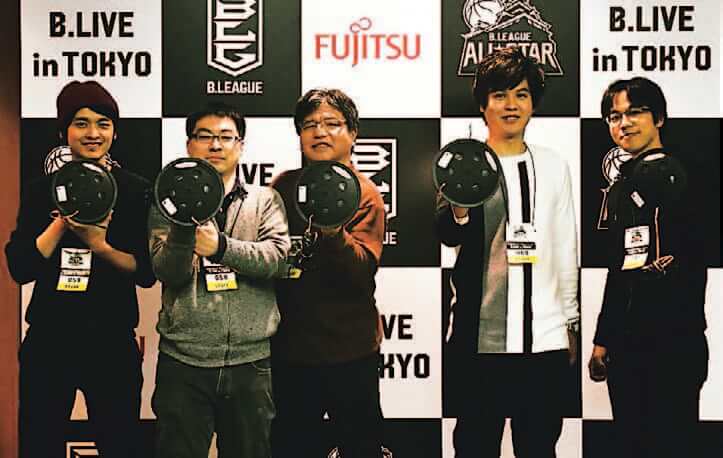
What is life at KMD usually like?
Saeko: Because the required subjects run until October in the first year, every day was group work and discussions. From the Fall Semester, everyone is mainly focused on the Real Projects. I belong to Professor Naohito Okude’s “OIKOS” project. It is hard because I am at the school five days a week for meetings and study groups while also away increasingly often for consultations with companies.
Xinyu: The laboratories vary considerably. I am involved in Professor Keiko Okawa’s “Global Education” project. As we often run workshops for designing educational internships, teamwork is indispensable. I am usually at the university where I can get hold of various people to hear specialist opinions and exchange information.
Tanner: Although I also make use of dedicated facilities like the Project Room at the university, I spend most of my time at Embodied Media’s Haptic Design Lab in Shibuya (laughter). I felt KMD’s “Innovation Pipeline” classes were hectic sometimes. In one of them, I took on a new challenge to build a virtual reality experience using a traditional form of performance art called Poi, and there was also a program tackling difficult corporate issues.
Satoshi: There was also the time I was so busy just before submitting a paper to a conference that I couldn’t go home for a week. Because Associate Professor Kouta Minamizawa’s project bases its activities both at KMD and the National Museum of Emerging Science and Innovation, I go to Odaiba 2-3 days a week. Since this project seeks sociable individuals who are able to work together with business people, there are different stimuli from being at the university.
Have there been any events that left a lasting impression?
Satoshi: The “crash course” camp held immediately after admission for three days and two nights was especially memorable. I quickly learned through this experience to work together with people from different backgrounds in order to create something new. Also, everybody could hold their drink, including the teachers (laughter). It felt like a place where you have to clearly switch on and off as even if everyone drinks until the early hours, courses still start at 9 a.m.
Xinyu: The crash course also aims to shatter the stereotypes held by new entrants. The camp challenges you to overcome obstacles.
Saeko: For me, helping to run the KMD Forum was a great experience. Preparations begin from June for the forum which is held in November. All aspects of this event are built at the hands of students, including its marketing and design. Unless the students take responsibility and get to work, nothing happens. There was such a sense of achievement at being able to collaborate beyond the regular frameworks of the laboratories.
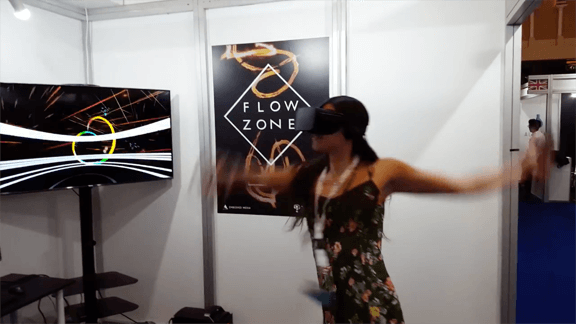
Is there smooth interaction with the international students?
Tanner: When there is a shared goal of carrying out the projects together, I don’t think you feel as much of a language barrier, but I definitely should be studying Japanese more! In any case, there are many instances during the Real Projects where things go well when mixing English and Japanese.
Xinyu: Although I am also an international student, I participated in a design program up to the completion of a prototype at Stanford University after entering KMD. A willingness to cooperate with others is needed wherever you are, not just at KMD.
Saeko: I participated in the GID program for roughly a year, studying design at the Royal College of Art in London and the Pratt Institute in New York for one semester each. The completely different way of progressing with a project compared to Japan was stimulating. Perhaps the best thing about KMD is not only that there are many international students, but that you can experience studying abroad for yourself
Kengo: I took advantage of the CEMS program and went to Canada in the first semester and a business school in Singapore in the second semester for three months each. Interacting with students from thirty-one countries has been a valuable experience as I could grasp my strengths and weaknesses objectively and discern the direction I want to take in the future.
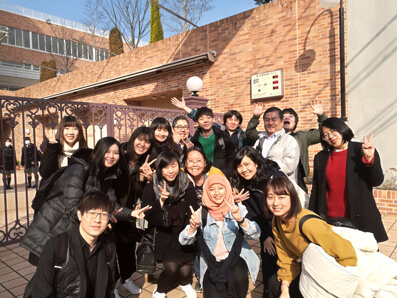
Are there any students who work?
Saeko: I think about ten percent of the students work. There is even a working mother who has started her own business, and compared to other universities I feel there are many such students.
Xinyu: Some people start businesses at KMD, others deepen their specialist research for their thesis, while others still build up their network of contacts for work.
Satoshi: I think people are able to continue their studies even when busy because you can view all of the classes via the video archive. It is very convenient as you can also access past classes. On the other hand, I feel nervous about having my thesis presentation kept on there too (laughter).
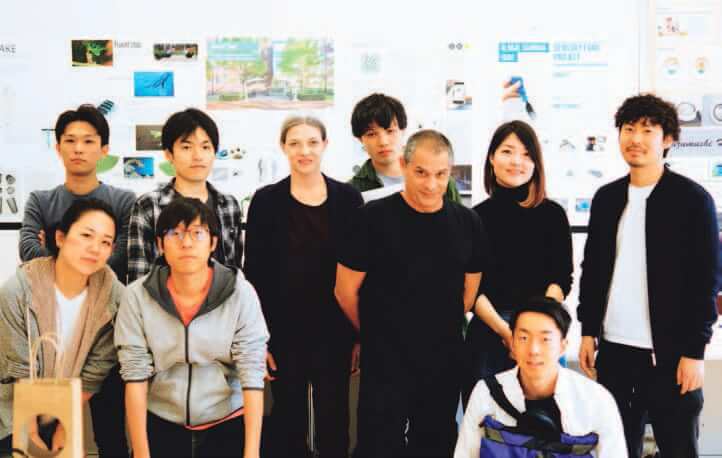
Did you feel any gap between your expectations before and the reality after entering KMD?
Tanner: Because KMD is a graduate school, I had an image of me often doing research alone. Actually though, my communication skills have improved, not only in terms of language but also communication in a business sense, such as the ability to skillfully express my ideas in presentations. Moreover, the tremendous feeling I had being able to realize something I couldn’t achieve on my own through working together with people who each have different talents was greater than I imaged. On a personal level, not only can I use software, but learning to think about hardware as well was also important.
Xinyu: I agree. Before entering KMD I thought it would be a problem not having any design skills. However, I learned it was actually okay to seek help from those around when doing the projects. The students all help each other out.
Satoshi: There are many people here who are highly attentive and everyone is positive.
Saeko: When I first entered KMD I was struck by just how different the way of thinking of some people could be. However, to the extent that what I had considered common sense didn’t apply, I also felt I grew as a person when accepting new values.
What advice do you have for people thinking about applying to KMD?
Saeko: It is important not to be afraid of personal change. I want people to enjoy the experience of changing by not being too rigid in their opinions, coming in to contact with many ideas, and having an interest in them.
Xinyu: Hiyoshi is a fun town and kind to foreigners. I recommend living close to KMD (laughter). As there is a rich variety of scholarships and a medical clinic located in the building, it is ideal for international students. You can also work at any time at KMD, which is open 24 hours a day.
Kengo: New students should think carefully when choosing a Real Project, comparing each one with what it is they want to do. I changed to a project on design thinking after entering KMD, but this was very challenging as it is a field in which I had no previous experience. I think they should decide after learning as much as possible about the ambience of each laboratory.
Finally, what are your dreams for the future?
Saeko: I would like to have an international job that is beneficial for people and society and allows me to make use of my knowledge and skills of system design and innovation through design thinking.
Xinyu: I would like to become a teacher at KMD and carry on workshops developed through global education for the next generation. I will actually join a publishing company from April, but I have a strong desire to return to KMD and continue my research.
Kengo: It’s a bit vague, but I really want to achieve something in life. Whether at the IT company where I am due to work after graduation or in a separate field, I aim to push ahead until satisfied and give it my all.
Tanner: Because I started a company this year in Japan, I will do this job after graduation. Although I might return to the United States to work in the future, wherever I am I want to have international interactions like I do here. My dream is to realize a type of community that has never existed before.
Satoshi: I want to create something new that will be loved around the world. Combining what I have worked on at KMD with my expertise in technology, I want to try and create something that doesn’t exist yet.
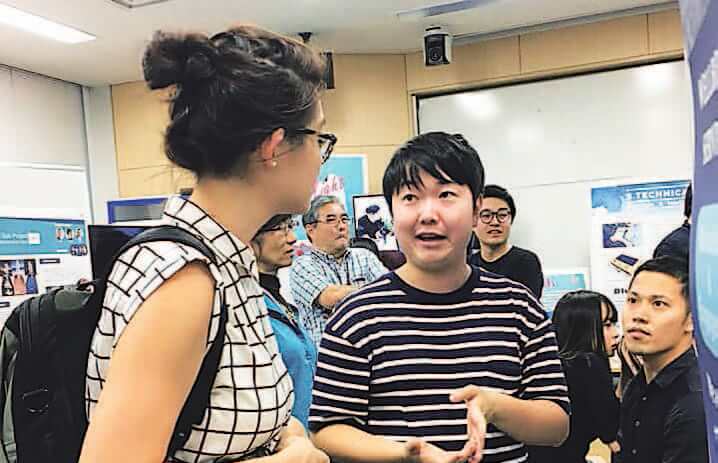
(This interview was held in November 2017)